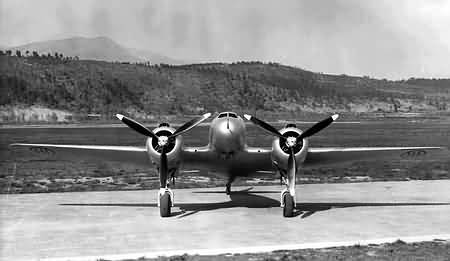Piaggio P.111 on:
[Wikipedia]
[Google]
[Amazon]
The Piaggio P.111 was an Italian high-altitude research aircraft designed and built by
/ref> While the P.111 prototype was under construction, the ''Regia Aeronatica'' decided to use it as a high-altitude research aircraft rather than a bomber prototype.

AR Aircraft Manuals Blueprints Video Publications: Piaggio P.111
{{Portal bar, Italy, Companies, Aviation P.111 1940s Italian experimental aircraft Aircraft first flown in 1941 Twin-engined piston aircraft
Piaggio
Piaggio & C. SpA (Piaggio ) is an Italian motor vehicle manufacturer, which produces a range of two-wheeled motor vehicles and compact commercial vehicles under seven brands: Piaggio, Vespa, Gilera, Aprilia, Moto Guzzi, Derbi, and Scarabeo. ...
for the ''Regia Aeronautica
The Italian Royal Air Force (''Regia Aeronautica Italiana'') was the name of the air force of the Kingdom of Italy. It was established as a service independent of the Regio Esercito, Royal Italian Army from 1923 until 1946. In 1946, the mon ...
'' (Italian Royal Air Force).
Design and development
The genesis of the P.111 was in 1938, when the ''Regia Aeronautica'' awarded a contract to Piaggio to construct the prototype of a three-seat, twin-engine, high-speed, high-altitudebomber
A bomber is a military combat aircraft designed to attack ground and naval targets by dropping air-to-ground weaponry (such as bombs), launching aerial torpedo, torpedoes, or deploying air-launched cruise missiles. The first use of bombs dropped ...
with a pressurized cabin
Cabin pressurization is a process in which conditioned air is pumped into the cabin of an aircraft or spacecraft in order to create a safe and comfortable environment for passengers and crew flying at high altitudes. For aircraft, this air is u ...
. Piaggio constructed a new radial engine
The radial engine is a reciprocating type internal combustion engine configuration in which the cylinders "radiate" outward from a central crankcase like the spokes of a wheel. It resembles a stylized star when viewed from the front, and is ...
especially for the P.111, the 18-cylinder double-row air-cooled Piaggio P.XII R.C.l00/2v, which was fitted with a two-stage supercharger
In an internal combustion engine, a supercharger compresses the intake gas, forcing more air into the engine in order to produce more power for a given displacement.
The current categorisation is that a supercharger is a form of forced indu ...
.JOHAN VISSCHEDIJK COLLECTION No. 3993. Piaggio P.111/ref> While the P.111 prototype was under construction, the ''Regia Aeronatica'' decided to use it as a high-altitude research aircraft rather than a bomber prototype.
Operational history
The P.111 first flew on 9 April 1941. Employed in research related to pressurization of the cabin of thePiaggio P.108
The Piaggio P.108 ''Bombardiere'' was an Italian four-engine heavy bomber that saw service with the Regia Aeronautica during World War II.Matricardi 2006, p. 257. The prototype first flew on 24 November 1939 and it entered service in 1941.
...
heavy bomber, it made 110 test and research flights before being retired and scrapped early in 1943.
Operators
; *''Regia Aeronautica
The Italian Royal Air Force (''Regia Aeronautica Italiana'') was the name of the air force of the Kingdom of Italy. It was established as a service independent of the Regio Esercito, Royal Italian Army from 1923 until 1946. In 1946, the mon ...
''
Specifications

See also
References
External links
AR Aircraft Manuals Blueprints Video Publications: Piaggio P.111
{{Portal bar, Italy, Companies, Aviation P.111 1940s Italian experimental aircraft Aircraft first flown in 1941 Twin-engined piston aircraft